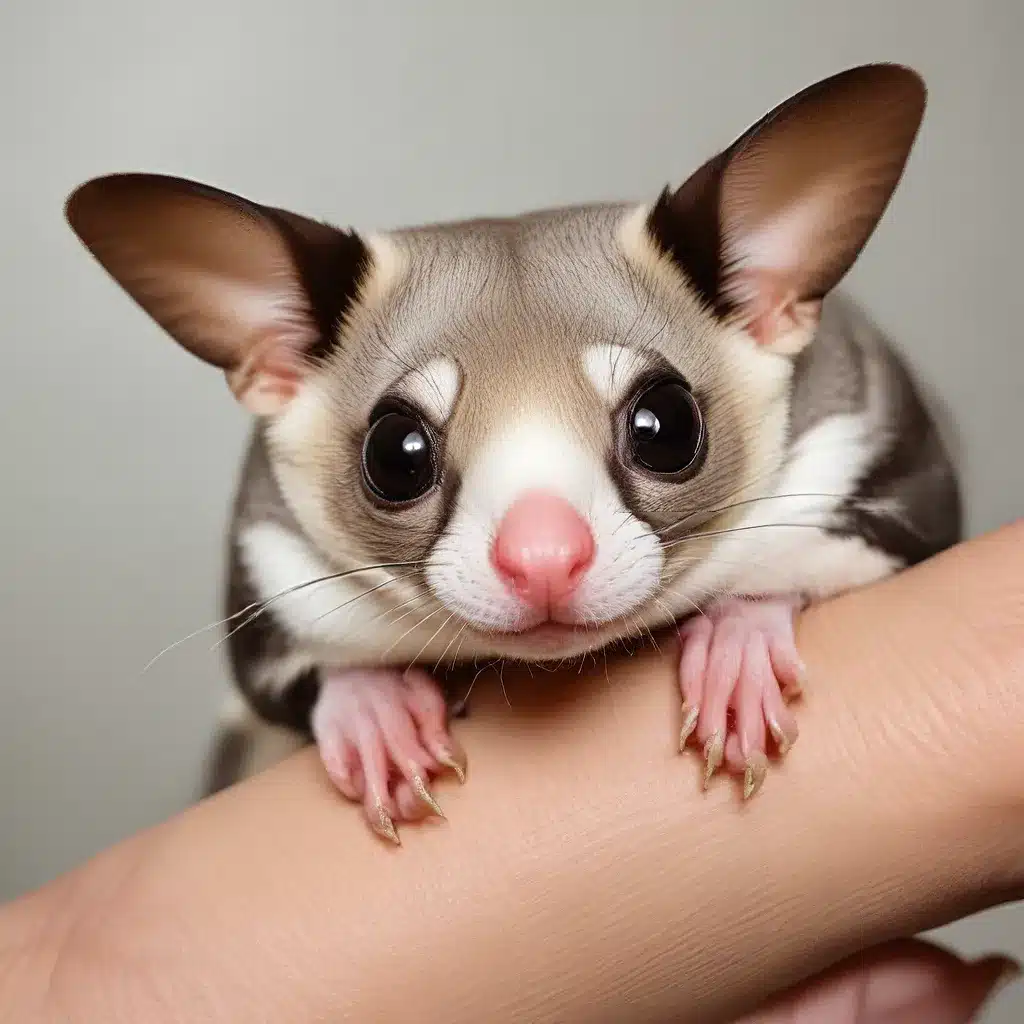
Gliding Through the Treetops: An Extraordinary Marsupial Adventure
Have you ever wondered what it would be like to soar effortlessly through the air, gliding gracefully from tree to tree? Well, let me introduce you to the sugar glider, a tiny yet remarkable marsupial that can do just that. These enchanting creatures possess a unique set of abilities that sets them apart from their furry counterparts, making them truly one-of-a-kind pets.
As I delve into the fascinating world of sugar gliders, I can’t help but be captivated by their intriguing behaviors. These pint-sized acrobats of the treetops are more than just cute and cuddly – they’re true marvels of nature, with a remarkable range of skills and adaptations that will leave you in awe.
Mastering the Art of Gliding
One of the most mesmerizing aspects of sugar gliders is their ability to glide through the air. These remarkable little creatures have a special membrane, called a patagium, that extends from their fifth finger to their ankle, allowing them to soar through the air.
Imagine the thrill of watching a sugar glider leap from a high branch, its body stretched out like a tiny winged creature, its bushy tail acting as a rudder to guide its graceful descent. They can glide up to 50 meters between trees, effortlessly navigating the complex canopy of the forest.
But the sugar glider’s aerial prowess doesn’t end there. These nimble acrobats can also make sharp turns, change direction mid-flight, and even land with precision on the narrowest of branches. It’s a mesmerizing display of agility and control that will have you wondering, “How do they do that?”
Adaptations for a Life in the Treetops
The sugar glider’s remarkable gliding ability is just one aspect of its impressive suite of adaptations. These versatile creatures are truly built for life in the treetops.
For starters, their large, round eyes are perfectly suited for navigating the dimly lit forest canopy. Sugar gliders are most active at night, when they emerge from their nests to forage for food and explore their territory.
But their eyes aren’t the only tools in their arsenal. Sugar gliders also have sharp, curved claws that enable them to effortlessly climb up and down tree trunks, and even hang upside down from branches. And their long, bushy tails? Not only do they provide stability and steering during glides, but they also serve as a counterbalance, helping the sugar glider maintain its balance as it scampers across the treetops.
The Social Dynamics of Sugar Glider Clans
Sugar gliders are not just remarkable for their physical adaptations; they also exhibit fascinating social behaviors that are truly unique. These tiny marsupials are highly social creatures, often living in groups of up to seven adults and their young, known as “clans.”
Within these clans, sugar gliders engage in a variety of social interactions, from playful antics to fierce territorial defense. They are known to be quite noisy, often using a range of vocalizations to communicate with one another, including chirps, barks, and even a distinctive “scream” when they feel threatened.
But it’s the way they mark their territory that really sets them apart. Dominant males in the clan will use specialized scent glands on their chests to deposit secretions on other clan members and the areas around their nests, effectively claiming their space and reinforcing the group’s cohesion.
The Fascinating Reproductive Cycle of Sugar Gliders
As if their social dynamics weren’t intriguing enough, sugar gliders also have a remarkable reproductive cycle that is truly unique among marsupials. These tiny creatures are capable of giving birth to twins, which they then carry in their pouches for just over two months.
But the real magic happens when the young sugar gliders finally emerge from the pouch. Rather than striking out on their own, they often continue to forage with their mothers, learning the ropes of survival in the treetops. This close-knit family structure is yet another testament to the incredible social bonds that define these fascinating creatures.
The Diverse Sugar Glider Species
It’s important to note that the sugar glider you’re likely familiar with, the Petaurus breviceps, is just one of three distinct species that fall under the “sugar glider” umbrella. In fact, recent scientific research has revealed that what was once considered a single, widespread species has now been split into three separate species, each with its own unique characteristics and range.
The other two species are the Savanna Glider (Petaurus ariel), found across Northern Australia, and the Krefft’s Glider (Petaurus notatus), which occurs in Eastern and Northern Australia. While they may share some similarities, each species has its own distinct adaptations and behaviors that make it a fascinating subject of study.
Conserving the Unique Habitats of Sugar Gliders
As we delve deeper into the remarkable world of sugar gliders, it’s important to remember that these incredible creatures and their habitats face a range of threats. From deforestation and habitat loss to the impacts of climate change, the future of sugar gliders is inextricably linked to the health of the forests and woodlands they call home.
That’s why it’s crucial that we support conservation efforts and work to protect the natural environments that sustain these unique marsupials. By doing so, we can ensure that future generations will have the opportunity to marvel at the extraordinary abilities of sugar gliders, and to witness firsthand the magic of these captivating creatures as they soar through the treetops.
So, if you’re anything like me, you’re probably itching to learn more about these fascinating animals. Why not visit GoldenExoticPets.com to discover more about sugar gliders and how you can help protect their incredible habitats? Trust me, once you’ve seen a sugar glider in action, you’ll be hooked for life.

